Starbucks, Sephora, and Disney’s Omnichannel Approach
The good old days of customers coming from one channel are over. With the rapid rise of social and mobile channels as valuable marketing platforms, omnichannel business strategy has become necessary approach for a successful brand. While it is easy to understand “Why?” the “How?” is less clear.
Before we can discuss what techniques are being used to optimize omnichannel marketing, we need to take a look at what omnichannel marketing really means. Omnichannel is an approach to sales that utilizes multiple channels and outlets of shopping. The primary goal is to create a seamless customer shopping experience, whether the individual is shopping on a mobile device, desktop, or in a physical store.
Now that we have established a what omnichannel is, let’s take a look at how three companies use it to their advantage.
Starbucks
The Starbucks Rewards program is a perfect example of omnichannel marketing in practice. Starbucks is one of the biggest coffee retailers in the world. Their market reach is incredible, and they have harnessed the power of omnichannel to leverage that huge customer base. The Starbucks Rewards system uses an omnichannel approach to make the coffee buying experience more convenient for customers. Customers can use the rewards card to make purchases without taking out their wallets and to also reload the rewards balance online, in-store, by telephone, or by mobile app. All changes to rewards accounts immediately update across all channels. Thanks to the omnichannel approach, Starbucks customers can satisfy their caffeine cravings at any time, on any channel.

Sephora
The makeup retailer has also changed the way consumers interact with products. Sephora utilizes the omnichannel shopping process to create an enjoyable experience for customers. Sephora has implemented the “My Beauty Bag” program to allow customers to manage their beauty products and see purchase history. The “My Beauty Bag” program makes it easy and accessible for Sephora customers to add items to their shopping carts, peruse their browsing history, make savings on purchases, and re-order items. Sephora’s rewards program also allows members to use their Beauty Bags on their mobile device, computer, and send digital gifts.
While making in-store purchases, customers can use the Sephora app to complement the brick and mortar shopping experience. Sephora is also changing the in-store experience as well, by introducing the Beauty Tip Workshop. Customers now have the opportunity to access their Beauty Bags, see recommended items and looks, and make purchases based on the items shown in the store. Sephora is expertly using omnichannel to revolutionize the cosmetic shopping experience.
Disney
Disney brings omnichannel to the world on tourism and retail. The magic of Disney is brought to multiple channels thanks to their approach. Disney’s process pays attention to even the smallest of details to make a flawless and consistent shopping environment across channels. When booking a trip through Disney’s website or app, customers have access to the My Disney Experience tool to help plan the logistics of the trip. From dining options, to park attractions, to securing passes, the My Disney tool helps customers plan for the entire trip. Once customers get to the amusement park, the Disney mobile app can locate the attractions and performances across the park and gives an estimated waiting time for each attraction and show.
Disney takes the magic even further with the implementation of the Magic Band program. These wristbands not only act as theme park entrance passes, but also act as hotel room keys, Fast Pass check in, food ordering tools, and photo storage devices. These wristbands also include personalized surprises for each band holder. Disney uses omnichannel to make traveling a connected, all-in-one experience.
Omnichannel initiatives like these enable brands to create the ideal customer experience across all channels. Starbucks, Sephora, and Disney approaches are great examples of brand’s solving for the ever-evolving needs of the digital age.

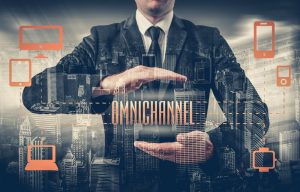
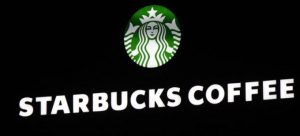

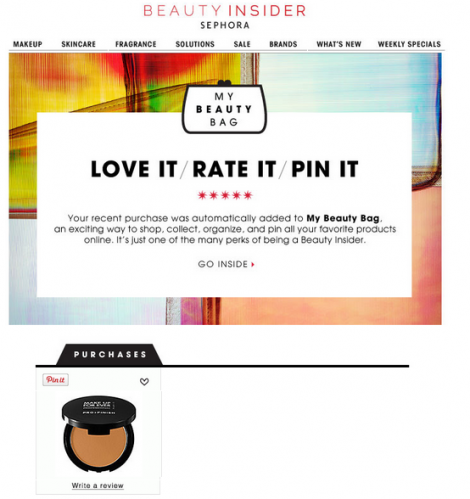 Buy in store, receive an email asking for a review. I recently purchased foundation from Sephora at one of their mall locations and received this email a few days later.
Buy in store, receive an email asking for a review. I recently purchased foundation from Sephora at one of their mall locations and received this email a few days later.
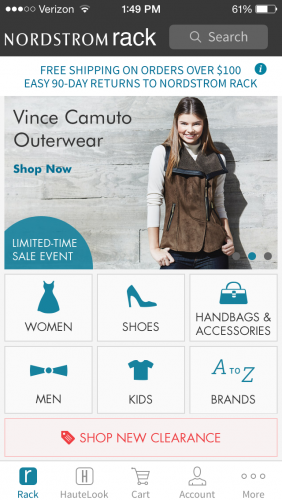
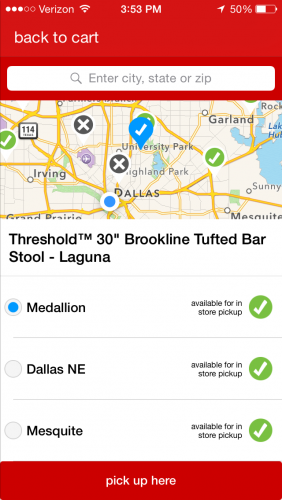 Target’s omnichannel experience consists of ship-to-store, pick-up at store, ship-to-home, an ecommerce website, and a mobile app. Target’s mobile app allows for customers to pinpoint exactly where items are located in the store, down to the precise aisle of where they reside. Other features of the mobile app include adding items to your virtual cart and selecting pick up in store, a map of the store layout, a coupon/savings section, shopping list, registry list, and wish list among others.
Target’s omnichannel experience consists of ship-to-store, pick-up at store, ship-to-home, an ecommerce website, and a mobile app. Target’s mobile app allows for customers to pinpoint exactly where items are located in the store, down to the precise aisle of where they reside. Other features of the mobile app include adding items to your virtual cart and selecting pick up in store, a map of the store layout, a coupon/savings section, shopping list, registry list, and wish list among others.